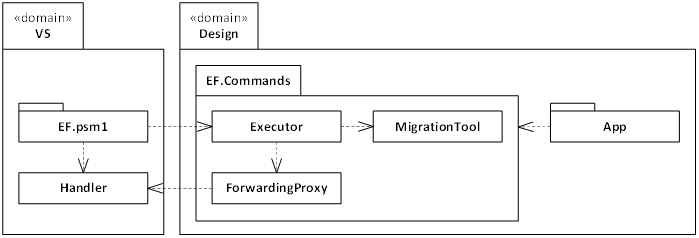
o|-output The file to write the result to. > dotnet ef migrations script Usage: dotnet ef migrations script f|-force Don't check to see if the migration has > dotnet ef migrations remove Usage: dotnet ef migrations remove
Ef core command line install#
Before you can execute EF Core migration or scaffolding commands, you'll have to install this package as either a global or local tool. > dotnet ef migrations list Usage: dotnet ef migrations list Installing the EF Core Command Line Interface (CLI) As with EF Core 3.0 and 3.1, the EF Core CLI is no longer included in the. Paths are relative to the project directory. in one of the following ways, Install the package from command line by running. o|-output-dir The directory (and sub-namespace) to usĮ. 2 UI type: Blazor DB provider: EF Core Tiered (MVC) or Identity Server. > dotnet ef migrations add Usage: dotnet ef migrations add t|-table >TABLE_NAME The project to use. If you're more comfortable working inside Visual Studio or have experience with EF6 migrations, you can also use the Package Manager Console tools. NET Core CLI tools, which work on all platforms. o|-output-dir The directory to put files in. First, you'll have to install the EF Core command-line tools: We generally recommend using the. d|-data-annotations Use attributes to configure the model ( > dotnet ef dbcontext scaffold Usage: dotnet ef dbcontext scaffold Some of the command and their use is given. > dotnet ef dbcontext list Usage: dotnet ef dbcontext list Open the command prompt, type dotnet help, and press the enter button to display all the. > dotnet ef dbcontext info Usage: dotnet ef dbcontext info
Ef core command line update#
> dotnet ef database update Usage: dotnet ef database update msbuildprojectextensionspath The MSBuild project extensions path. s|-startup-project The startup project to use. dry-run Show which database would be dropped, but don't drop it.

> dotnet ef database drop Usage: dotnet ef database drop Let's see available options for each command. Scaffolds a DbContext and entity types for a database. Updates the database to a specified migration. The following table lists all EF commands and sub commands. Use "dotnet ef -help" for more information about a command.Īs you can see above, there are three main EF commands available: database, dbcontext and migrations.

Migrations Commands to manage migrations. prefix-output Prefix output with level.ĭatabase Commands to manage the database.ĭbcontext Commands to manage DbContext types. C:> dotnet ef -helpĮntity Framework Core. Open command prompt and navigate to your project's root folder and enter dotnet ef -help to list EF Core commands, as shown below. NET Core Command List Interface to execute entity framework core commands. Home Command Line Interface Commands for Migrations


 0 kommentar(er)
0 kommentar(er)
